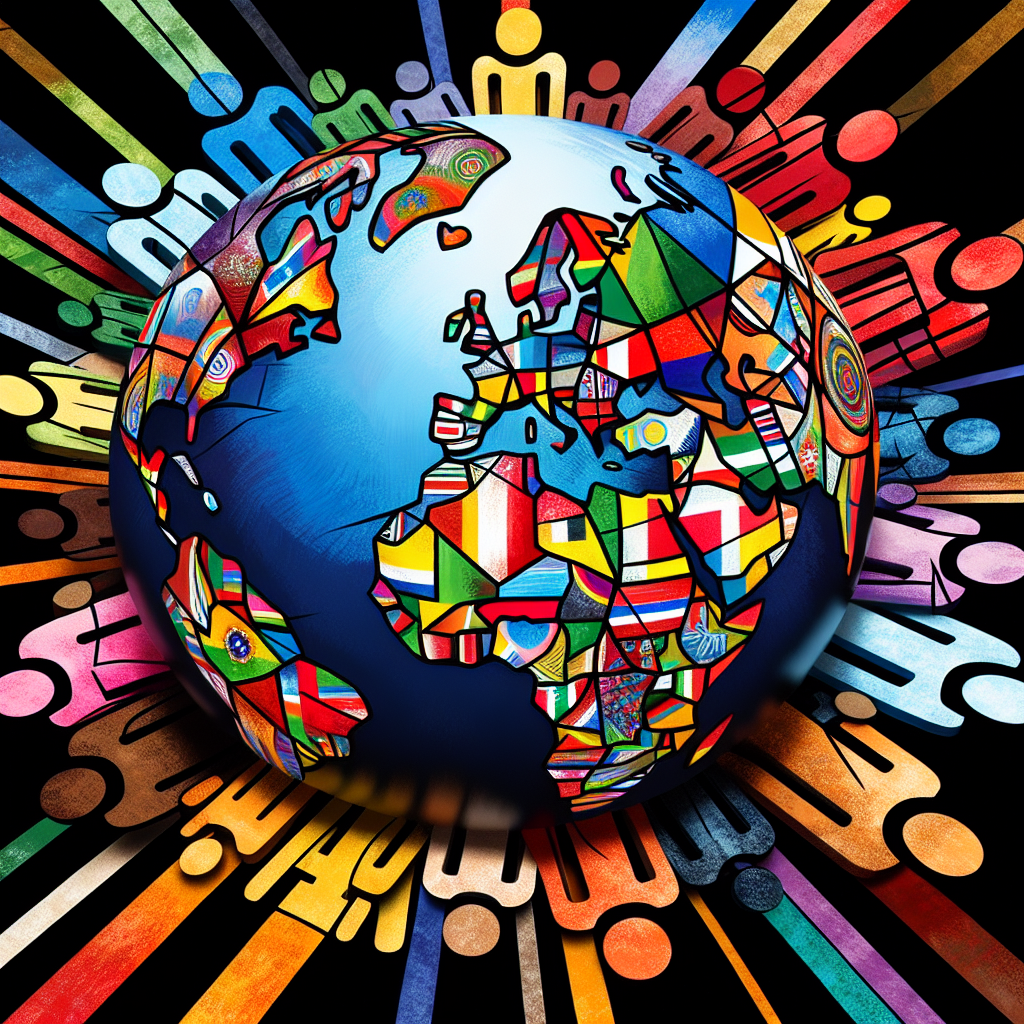
In an era characterized by rapid globalization and interconnectedness, intercultural competence has emerged as an invaluable asset. Imagine a workplace where misunderstandings are minimized, creativity flourishes through diverse perspectives, and collaboration transcends borders. Countries, businesses, and individuals alike must navigate this intricate landscape of cultures, making the mastery of intercultural competence not just beneficial, but essential. This article will delve deep into the core of Intercultural Competence: Essential Skills in a Globalized World, exploring its significance, key skills, practical applications, and the roadmap to becoming culturally fluent.
The Relevance of Intercultural Competence
Why Cultures Matter in a Globalized World
With the advent of technology and the internet, our world feels smaller than ever. Businesses are expanding beyond local markets, and social interactions are no longer confined by geography. People from diverse backgrounds often find themselves working together, sharing ideas, and building connections.
However, this fusion of cultures can be a double-edged sword. On the one hand, it fosters innovation and creativity. On the other, it can lead to misunderstandings, conflicts, and a breakdown in communication. A lack of intercultural competence can hinder professional growth and personal relationships.
In a globalized world, the ability to understand, communicate, and collaborate with diverse groups is paramount. The integration of varied perspectives not only enhances problem-solving but also prepares individuals and organizations to adapt to a changing world.
Key Components of Intercultural Competence
Understanding intercultural competence requires an exploration of its various components. Here are some essential skills:
1. Cultural Awareness
Awareness of one’s own cultural background and its impact on perceptions and behaviors is the bedrock of intercultural competence. Recognizing that cultural conditioning shapes how we view the world can facilitate more open and honest conversations.
2. Empathy
Empathy is the ability to understand and share the feelings of others. In a multicultural setting, this involves appreciating different perspectives and emotional responses influenced by cultural contexts. Cultivating empathy allows us to bridge gaps and foster meaningful connections.
3. Adaptability
In an ever-changing global landscape, being flexible is crucial. Adaptability in communication styles, behaviors, and even expectations can significantly enhance interactions with diverse cultures.
4. Communication Skills
Effective communication goes beyond language proficiency. It encompasses non-verbal cues, context, and respect for cultural norms. Active listening and response strategies tailored to cultural nuances are essential for successful exchanges.
5. Critical Thinking and Problem-Solving
Cultural complexities often lead to challenging situations. The ability to think critically and solve problems through a culturally informed lens is vital. This means considering cultural backgrounds in decision-making processes.
6. Openness to Different Worldviews
Engaging with different cultures necessitates an openness to adjust one’s viewpoints. Acknowledging that there are various ways to approach problems and solutions enhances collaborative efforts.
Case Studies: Real-World Applications of Intercultural Competence
Case Study 1: Google’s Global Team Collaboration
Google, known for its innovative work culture, places a strong emphasis on intercultural competence. The company’s global teams are often composed of members from various countries. To harness the diversity of thought, Google implements training programs that enhance cultural awareness among employees. These programs encourage individuals to share their unique experiences, leading to enriched team dynamics and projects that reflect a global perspective.
Analysis: Google’s success illustrates how fostering intercultural competence can lead to increased creativity and innovative outcomes by leveraging diverse insights and experiences.
Case Study 2: Starbucks and Cultural Adaptation
When Starbucks expanded into China, the company faced challenges in adapting its product offerings and marketing strategies to resonate with local consumers. By employing culturally aware marketing campaigns and adjusting menu items to include local flavors, Starbucks effectively integrated into the Chinese market.
Analysis: This case underscores the importance of intercultural competence in understanding and respecting local cultures to thrive in new markets.
Case Study 3: The United Nations
The United Nations (UN) serves as a prime example of intercultural competence on a global scale. Staff members from diverse cultures collaborate on international projects that address pressing global issues. Training in cultural sensitivity is mandatory, ensuring that all representatives understand and respect each other’s backgrounds.
Analysis: The UN exemplifies how intercultural competence can facilitate dialogue and cooperation among nations, demonstrating its critical role in addressing global challenges.
Practical Steps to Develop Intercultural Competence
Developing intercultural competence is a journey that requires continuous learning and practice. Here are actionable steps to cultivate these essential skills:
1. Engage in Cultural Exchange Programs
Participating in exchange programs can provide firsthand experience of different cultures, enhancing your understanding and empathy.
2. Pursue Language Learning
Learning a new language not only enhances communication but also offers insights into cultural nuances and perspectives.
3. Attend Workshops and Training
Many organizations offer training programs focused on intercultural competence. Engaging in these workshops can provide tools and strategies for real-world application.
4. Build Relationships
Take the initiative to build relationships with individuals from different cultural backgrounds. Engage in conversations and actively listen to their experiences and perspectives.
5. Reflect on Personal Biases
Self-reflection is crucial for personal growth. Examine any preconceived notions you may hold and work to overcome biases that can impede genuine understanding.
6. Stay Informed
Keeping abreast of global affairs and cultural trends can enhance your knowledge and appreciation of diverse perspectives.
Table 1: Benefits of Intercultural Competence
| Benefit | Description |
|---|---|
| Increased Innovation | Diverse teams generate creative solutions. |
| Enhanced Communication | Improved clarity and understanding minimize conflicts. |
| Greater Market Reach | Understanding cultural contexts can improve marketing strategies. |
| Stronger Relationships | Foster trust and collaboration in diverse settings. |
| Better Global Leadership | Competent leaders can guide teams across cultural divides. |
Conclusion
In a world where cultures collide and interact daily, intercultural competence has transitioned from a desirable skill to an essential one. By investing in the development of skills like cultural awareness, empathy, adaptability, and effective communication, individuals and organizations can thrive in this global landscape.
As you embark on your journey towards cultural fluency, remember that the key to unlocking a world of opportunities lies in understanding and embracing diversity. The ability to connect with others, no matter their cultural background, can pave the way for collaborative success and personal fulfillment.
FAQs on Intercultural Competence
1. What is intercultural competence?
Intercultural competence is the ability to communicate effectively and appropriately in various cultural contexts. It involves understanding diverse cultural perspectives and adapting one’s behavior to foster positive interactions.
2. Why is intercultural competence important?
As our world becomes increasingly globalized, the ability to navigate different cultures is crucial for personal and professional success. It can enhance innovation, improve teamwork, and reduce conflicts in multicultural settings.
3. How can I improve my intercultural competence?
You can improve your intercultural competence through cultural immersion, language learning, attending workshops, and actively engaging with individuals from diverse backgrounds.
4. What role does empathy play in intercultural competence?
Empathy enables individuals to relate to others from different cultures, fostering understanding and mitigating conflicts. It allows for a deeper connection and appreciation of diverse experiences.
5. Can organizations benefit from intercultural competence training?
Absolutely! Organizations that invest in intercultural competence training often see improvements in teamwork, creativity, and market outreach, leading to a more inclusive and effective workplace.
In summary, the journey towards mastering Intercultural Competence: Essential Skills in a Globalized World is not just a personal pursuit but a collective necessity in our interconnected world. Embrace this journey, and open the door to endless possibilities.

















